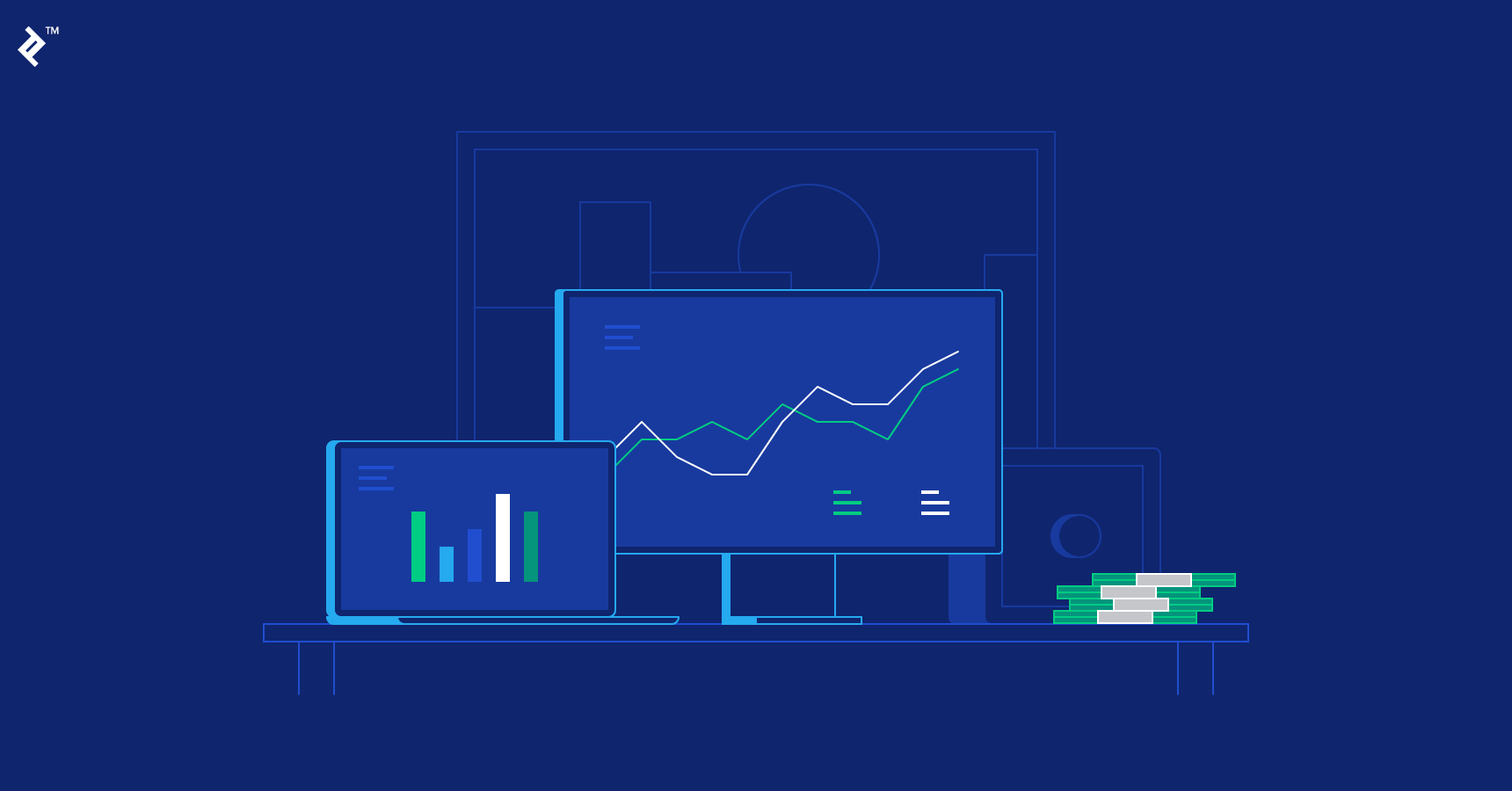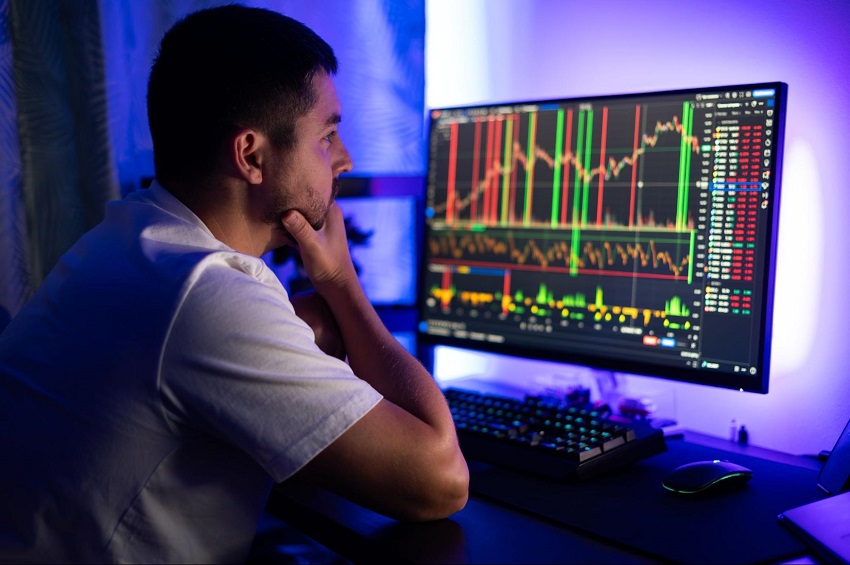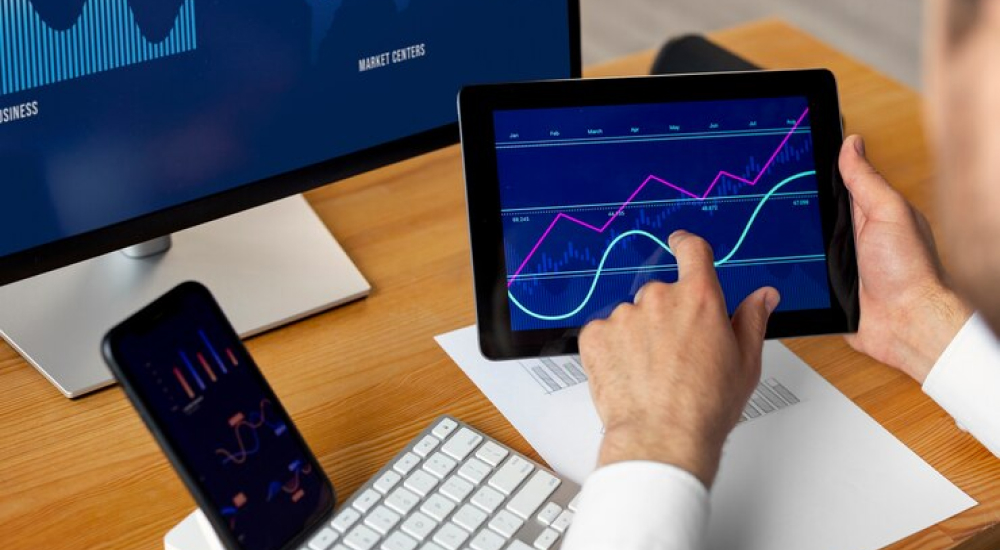10 Automated Day Trading Strategies You Must Know About
Discover 10 proven automated day trading strategies that boost efficiency, cut risks, and help traders stay ahead in fast markets.

In the fast-paced world of day trading, finding the best brokers to support your strategies can make or break your success. Automated day trading is transforming how traders approach the market. Consider setting your trades to execute automatically, freeing you from the need to monitor screens constantly. And if you’re just starting out, researching the best brokers for day trading can give you the tools, platforms, and speed needed to stay competitive.
This guide will help you navigate automated day trading and find the best brokers for day trading. We'll show you how to maximize profits with a funded trading account.
AquaFunded’s funded trading program provides a powerful solution to help you achieve your financial goals.
Benefits of Automated Day Trading

Keep Your Head in the Game
When it comes to trading, emotions can significantly disrupt the process. Fear and greed can cause you to hold onto losers for too long or sell winners too soon. Automated trading removes this issue by sticking to a set of predefined rules. Once the criteria are in place, trades occur without regard for market emotions. This discipline helps you avoid costly mistakes and stick to your strategy.
Faster Trades, Better Precision
In fast-moving markets like Forex, speed is everything. Humans can’t match the speed of computers. When a signal flashes, an automated system executes the trade instantly. This speed and precision give you an edge in catching opportunities that manual traders miss. You’ll be able to nail down entry and exit prices better.
Test Before You Invest
The beauty of automated trading is that you can backtest strategies using historical data to refine and optimize them for optimal performance. Before launching a Forex scalping strategy, for example, you can test it across different currency pairs and market conditions to tweak things like stop-loss levels. This helps you understand the strengths and weaknesses of your strategy, avoid unnecessary risks, and gain confidence in your system.
Spread the Love Across Markets
Handling multiple trades manually is a nightmare. Automated systems can place orders simultaneously across different markets, spreading your risk while increasing the chances of catching profitable opportunities. Whether it’s Forex pairs, stocks in various sectors, or commodities like gold and oil, automation keeps everything running smoothly without overwhelming you.
Consistency is Key
Even veteran traders can veer off course, chasing losses or ignoring signals. Automated systems enforce discipline by adhering strictly to the strategy. Consistent execution over the long term is crucial. While a plan may not always win, sticking to it increases the likelihood of overall success.
Round-the-Clock Trading
Forex markets run 24/5, and stock markets also have fixed hours. No one can watch the market nonstop, but your automated system can. It never misses a setup, executing trades automatically to minimize missed opportunities, even when you're asleep.
Cut Down on Errors
Manual trading is prone to errors—wrong trade size, misreading price bars, hitting “sell” instead of “buy.” These mistakes can be costly. Automated systems reduce human error by executing instructions as programmed, even when experienced traders may make mistakes.
Scale and Conquer
One less obvious perk of automation is scalability. Manual trading limits how many trades you can handle. Automation enables you to run multiple strategies simultaneously across various markets. This frees you up to test new strategies while allowing existing ones to operate in the background.
Related Reading
- Is Day Trading Illegal
- How Risky Is Day Trading
- Can You Make Money Day Trading
- Is Day Trading A Good Side Hustle
- How To Find Stocks For Day Trading
- What Type Of Trading Is Most Profitable
- How To Trade And Make Money
- Do You Pay Taxes On Day Trading
- How Long Does It Take To Become A Profitable Day Trader
- Can Day Trading Be A Career
10 Automated Day Trading Strategies

1. Riding the Rebound: Mean Reversion Strategy
The Mean Reversion Strategy is based on the principle that prices tend to revert to their average levels over time. Think of it like a stretched rubber band—it snaps back when released. Traders aim to profit from this tendency by targeting assets that experience extreme price shifts, expecting a return to their normal range.
This approach often works better in markets like the stock market, where mean reversion is more common. To implement this strategy, traders can utilize tools such as moving averages, the Relative Strength Index (RSI), Bollinger Bands, and the stochastic oscillator. A popular tactic is the Bollinger Band strategy, which involves buying when prices dip below the lower band and selling when they rise above the upper band.
2. Catch the Wave: Momentum Strategy
The Momentum Strategy is all about capitalizing on market trends, much like surfing a wave. The idea is that assets that have performed well over the past few months will likely continue to do so in the near future. Traders typically buy stocks with high returns from the past three to twelve months and sell those with weaker performance. While effective in the stock market, this strategy may not yield the same results in other markets, such as the bond market.
3. Seizing Opportunities: Arbitrage Strategy
The Arbitrage Strategy aims to exploit price differences of the same security across different markets for risk-free gains. Consider buying a product cheaply in one place and selling it for more elsewhere. In the forex market, triangular arbitrage involves exchanging currencies to profit from rate discrepancies. Because these opportunities last only seconds, sophisticated software is needed to identify and act on them, making this approach unsuitable for retail traders.
4. Following the Flow: Trend Following Strategy
The Trend Following Strategy embraces the saying “the trend is your friend.” It involves using tools such as moving averages and price levels to track market movements. This strategy can vary in effectiveness depending on the market. In stocks, it’s more successful over long periods. Trend following often yields many small losses with occasional significant wins. The psychological challenge of enduring frequent setbacks for sporadic rewards makes it difficult to persevere.
5. Seeking Balance: Statistical Arbitrage Strategy
The Statistical Arbitrage Strategy employs complex algorithms and high-frequency trading to profit from pricing inefficiencies. It relies on mean reversion, predicting that prices will eventually revert to their averages. This approach focuses on accumulating small, consistent profits over time. However, it requires significant computational resources and data access, making it unsuitable for retail traders.
6. Dual Approach: Pair Trading Strategy
The Pair Trading Strategy involves trading two highly correlated assets to profit from temporary price discrepancies between them. Think of it as betting on two close friends in a race—when one lags, you expect it to catch up. This market-neutral strategy doesn’t rely on market direction, as it involves going long on one asset and short on another. While similar to statistical arbitrage, pair trading is more accessible to retail traders.
7. Liquidity Game: Market Making Strategy
The Market Making Strategy provides liquidity by placing both buy and sell orders, profiting from the bid-ask spread. High-frequency algorithms quickly update bids and asks in response to market movements. Professional market makers typically use this approach, but prop and retail traders can also employ it, especially at market open. However, it requires advanced infrastructure, automation, and direct market access to minimize order execution latency.
8. Reading the Room: Sentiment Analysis Strategy
The Sentiment Analysis Strategy uses algorithms to gauge market sentiment and generate trades based on investor emotions. It’s akin to predicting market movements by reading the collective sentiment of traders. These strategies often employ natural language processing to interpret the emotional content of news, social media, or financial reports.
Sentiment tends to be mean-reversionary, meaning traders might buy when the market is down and sell when it’s up. Machine learning models trained on historical sentiment data can predict market reactions, though they may be sensitive to sudden opinion shifts or unexpected news.
9. Learning and Adapting: Machine Learning-Based Strategy
The Machine Learning-Based Strategy utilizes algorithms from the field of machine learning to analyze historical data and predict future price trends, thereby generating trades. It adapts to financial market changes, making it a versatile tool for traders. However, the complexity of these algorithms requires a deep understanding of machine learning techniques and financial markets.
10. Embracing Volatility: Volatility Trading Strategy
The Volatility Trading Strategy focuses on assets with significant price fluctuations, often utilizing options or derivatives to capitalize on these movements. It thrives in unstable markets, much like an adrenaline junkie enjoying a roller coaster ride. Volatility is generally good for trading, as it creates profit opportunities. Additionally, short strategies tend to perform better when volatility is high.
Turn your trading skills into substantial profits without risking your own capital. AquaFunded offers a funded trading program that provides access to accounts of up to $ 400,000 with the most flexible trading conditions in the industry, including no time limits, easy-to-achieve profit targets, and a profit split of up to 100%.
AquaFunded: Your Ticket to Stress-Free Day Trading
Join over 42,000 traders worldwide who have already collected more than $2.9 million in rewards, all backed by our 48-hour payment guarantee. Start trading today with instant funding options or prove your skills through our customizable challenge paths and keep up to 100% of what you earn.
5 Best Automated Day Trading Platforms
1. AquaFunded

Turn Your Skills into Profits
AquaFunded lets you profit from day trading without risking your own money. Get access to accounts up to $400K with flexible trading conditions—no time limits, realistic profit targets, and up to 100% profit split. Over 42,000 traders worldwide have already collected more than $2.9 million in rewards. Start trading with instant funding options or prove your skills through customizable challenge paths.
2. ProRealTime

No-Code Trading Made Easy
ProRealTime offers a no-code interface that simplifies the development of trading algorithms. Its backtesting module uses tick-by-tick data for accuracy and supports up to 1 million units per chart. Optimize variables, use advanced programming, and deploy strategies on ProRealTime’s servers.
Pros
- Server-side execution
- Supports coding and no-code tools
- Accurate live execution
Cons
- Single-source data
- Expensive for small volumes
- Limited broker compatibility
3. TrendSpider

Intuitive Tools for Non-Coders
TrendSpider is ideal for developing strategies without coding. Its no-code strategy tester lets you build or tweak strategies in plain English, and results come with easy-to-read visuals. The platform shines with AI-driven tools for automation, but lacks complete brokerage execution.
Pros
- No-code strategy testing
- AI-driven analysis and automation
- Visually rich results
Cons
- Manual trade execution
- Limited broker pool
- Higher cost subscriptions
4. TradingView

Backtesting with Pine Script
TradingView makes backtesting accessible through its Pine Script language. However, it requires learning and doesn’t support full automation. Set up detailed alerts for scripts and utilize third-party platforms or APIs to automate trades as needed.
Pros
- Large broker compatibility
- Active community
- Advanced backtesting tools
Cons
- No natural language coding
- No integrated trading automation
- Some features behind a paywall
5. MetaTrader

Popular for Automated Trading
MetaTrader is compatible with a wide range of brokers and allows you to build and trade with trading algorithms. However, you’ll need to know MQL, as there’s no built-in no-code option. MetaTrader runs algorithms on your computer, requiring a VPS for continuous execution.
Pros
- Free software
- Large broker compatibility
- Third-party API data
Cons
- Client-side execution
- Absence of no-code
- Limited customer support
Related Reading
- Can Day Trading Make You Rich
- Best Moving Average For Day Trading
- How Much Can You Make Day Trading With $1,000
- Day Trading Technical Analysis
- Day Trading Momentum Strategy
- Day Trading With AI
- Day Trading Futures For A Living
- Day Trading Setup
- Day Trading Goals
- Day Trading Success Rate
Challenges of Automated Day Trading

Mechanical Failures: When Tech Takes a Break
Automated trading sounds simple: load your strategy into software, sit back, and let the computer work. But reality is trickier. Many trading systems operate directly from your computer. If your internet goes down, your orders might not reach the market. Consider a sudden power outage or computer crash. These glitches can stop your algorithm cold or send it into a frenzy. Always have a backup plan to handle these hiccups.
Monitoring: You Still Have to Keep an Eye on Things
Is it nice to set your system and forget it? However, here's the catch—automated systems require constant monitoring. Why? The same mechanical failures mentioned before: connectivity issues, power losses, or computer crashes. Add to that system quirks, such as the possibility of sending out incorrect or duplicate orders. Keeping an eye on things means you can catch and fix these issues fast. Otherwise, your system might run out of control.
Trading Experience: Start Simple, Then Get Fancy
Your skill with automated trading systems plays a significant role in your strategy choice. Complex strategies with numerous variables make it challenging to determine whether your trades will be profitable. If you're new to this, start with simple techniques. As you gain experience, you'll figure out what works best for you. Think of it like learning to drive: you don't start with a race car.
Over-Optimization: Good on Paper, Bad in the Market
Traders often backtest strategies to see how they'd perform. However, over-optimization can lead to strategies that appear effective in testing but fail in real-world trading. This occurs when traders adjust the plan to fit the historical data too closely. The result is a "perfect" strategy that fails the minute it's applied to live markets. Aim for a robust plan, not just one that is perfect in testing.
Programming Discrepancies: Real vs. Theoretical Trades
Sometimes, there's a gap between what your strategy promises to do and what actually happens. This can be due to discrepancies between the theoretical trades and the order entry platform. Expect a learning curve when building automated trading systems. Start small or use "paper trading"—simulated trading that doesn't involve real money—while you iron out the kinks.
Reliance on Risk-Reducing Orders: Manual Intervention Is Key
Automated trading often relies on orders like 'stop-loss' or 'stop-limit' to limit losses. But these orders aren't foolproof. Market conditions can prevent them from executing as expected. Sometimes, you can't liquidate a position without taking a big hit.
Join Our Funded Trading Program Today - Trade with our Capital and Keep up to 100% of the Profit.
Ever wished you could trade without putting your own money on the line? Meet AquaFunded. They let you flex your skills with accounts as big as $400K: no time limits or tricky profit targets. Plus, you can keep up to 100% of what you earn. This isn’t just a dream—more than 42,000 traders have pocketed over $2.9 million in rewards. They even guarantee payment within 48 hours. Sound like your kind of gig? You can start with instant funding or take a customizable challenge path.
Related Reading
- Day Trading Checklist
- Day Trading Statistics
- Best Markets For Day Trading
- Best Day Trading Strategies That Work
- Day Trading vs Dropshipping
- Day Trading vs Long-Term Investing
- Best Day Trading Indicators
- Best Software For Day Trading


